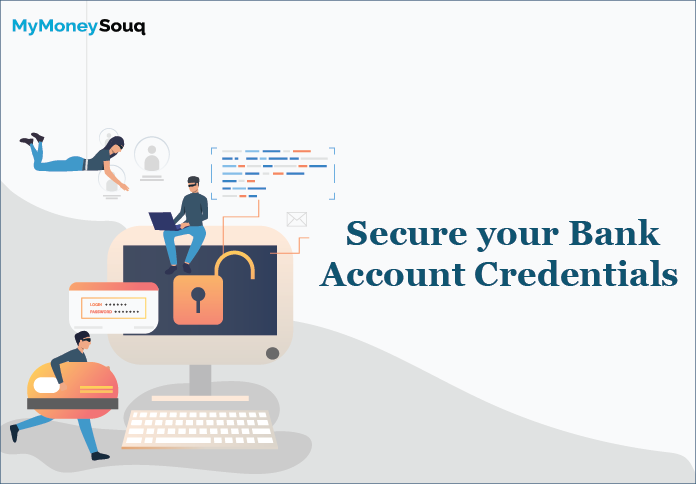The last decade can be called the decade of the rise of mobile and internet banking services around the globe. These are convenient ways of managing your finances, making purchases, investments, paying bills, and transferring funds. All you need is a simple swipe or a click to get it done. Gone are the days when these tasks required making visits to the bank branch. Today, you can finish your banking activities from the comfort of your home or office. However, there is an interesting quote that we found recently – ‘In modern times, with great comfort and convenience comes great responsibility.’ We don’t know who said this, but one could not have said it better. This is true for your banking account credentials too. Today, we will offer some tips to help you protect your mobile and internet banking credentials from miscreants.
1. Think before choosing a password
You will be surprised to find the number of people using unintelligent passwords like ‘password123’ or ‘(name)123’ as the passwords for accessing their banking accounts. These passwords can grant access to the account and allow someone to drain your account of your finances or steal your personal and financial information. Here are some tips to help you choose a strong banking password:
- Don’t use your name or date of birth in your password. We understand that these are easy to remember but they are easy to guess too.
- Try to keep the length of the password at least 8-10 characters. Hackers tend to crack shorter passwords in no time.
- Keep an alphanumeric password with at least one special character. Also, use a mix of capital and small case. Most people tend to keep the first alphabet capital to avoid complications. However, a complicated password will save you eventually. Lastly, while choosing numbers, avoid common sequences like 1234 or 5678 or your date of birth.
- Don’t use your banking password for any other login.
- Change your password once every 5-6 months.
2. Opt for the Two-Factor Authentication
Most banks offer an additional layer of security via a two-factor authentication process. Here, after entering your login ID and password, you have to clear an additional security test to gain access to your account. This test can be different with different banks. However, opting for a two-factor authentication widens your security net.
Check Here: Things to know about Digital Banking in UAE
3. Download Financial Apps carefully
We live in times when there is an app for everything. You have apps that can automatically pay your bills or track payments and update you regularly. While these are designed to make things more convenient for you – they are not all equally secure. Before you download any app that requires your mobile banking login credentials, you must ensure that the publisher of the app is genuine. For example, let’s say that you want to download an app to help you create and manage your monthly budget. For the app to effectively be of assistance, it might require your bank login credentials. Before granting access make sure that the app is secure and you read reviews on the app store.
4. Signup for all account-related alerts
Most banks offer alerts and notifications via email and/or SMS and/or app to help you monitor your banking activity. This is very important from a security perspective. Choose alerts for any credits or debits to your account, change of password, failed login attempt, and any activity associated with your bank account. On several occasions, receiving an alert or a notification on time is enough to take corrective measures and protect your account.
Check Here: Central Bank urges to make use of Digital Banking facilities
5. Watch Out for Phishing Scams
Phishing scams, in simple words, are methods used to trick you into giving your bank account credentials to thieves and miscreants.
Most banks send emails to their customers regularly. These emails can be about your account activity, new offers, or compliance-related. However, when you receive an email from your bank, how do you now that it is not a scam? While the logo and the fonts might be the same, to a normal eye, it might look authentic. However, if the email is a scam, then it will want you to login using your bank account credentials on a dummy site. This is where you can be careful. Whenever you receive any such email, DO NOT click on any link as merely clicking it might install malware on your computer. Instead, open a new window and visit your bank’s official site. If there are any changes required, the bank will specify it on the site as well. If the email is asking for some personal information, then call your bank and ask about the authenticity of the mail.
Another method adopting by criminals is a phishing phone call. You might receive a call from a regulatory body claiming that you have erred somewhere and that the caller can sort it out for you provided you offer some details. Don’t get scared. Always prefer to call the person back after taking a returning number. Look up the number online or call the organization in question to verify if it was a genuine call.
Summing Up
As we mentioned at the start of the article, mobile and internet banking brings your bank at your fingertips but also requires you to be responsible for its security. You don’t have to be scared of the threats outlined above, but take control of your credentials and who you share it with. The tips mentioned above can help you protect your bank account credentials by avoiding the common mistakes people make. Also, the device on which you use online banking like your laptop or mobile phone needs to have the latest security applications. You need to follow similar steps to set up a password for your phone/laptop so that it is secured and not easily hacked.

